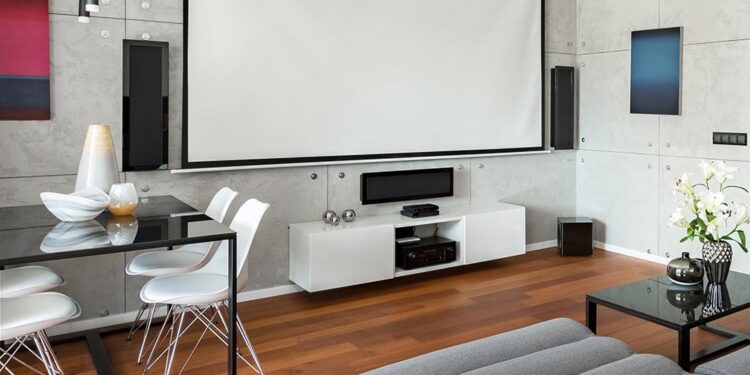Do you even need to measure it at all?
Projector screens come in various sizes, from small portable ones to large wall-mounted models. Most of the projectors under $600 also include built-in speakers. However, they don’t always tell you the exact dimensions. As such, measurements are often needed before buying them, suiting to your space and projector dimensions.
If you are planning to take along your projector for camping, it is important to have a fair idea of the size of projector screen required to make the most out of it.
How are projector screens measured?
For most things, measurements are usually done using a ruler or tape measure, depending on whether you want to measure vertically or horizontally. Coming to projector screens, there is only a single measurement considered under the screen size, i.e., diagonal.
Yes! Projector screens are always measured on diagonal like Televisions.
How to extrapolate the length and width of the projector screen?
However, just knowing the diagonal dimension is not enough in some cases. IF you want to find out the best location in your home to fit a specific screen, you must know the length and width. Specifically.
A diagonal measurement represents the hypotenuse of a triangle. Say breaking your screen diagonally forms the two triangles with diagonal being the hypotenuse. Now, applying the formula for the hypotenuse, you can easily find out the height and base of a triangle, but you should know either of them in place.
The projector aspect ratio expressed the relationship between the height and image and represented in a mathematical proportion of 1:1 (in general). If the aspect ratio is 2:1, consider the width shall be twice the length.
Most HD content is ideally suited to the aspect ratio of 16:9, while the cinematic aspect ratio comes at 2.35:1.
Does Throw Ratio help in finding the dimensions of a projector screen?
The size of the projector image is not static. Depending on the distance between the projector and screen, it varies. However, the aspect ratio remains fixed. It means that the length and width of the image shall change in the same proportion.
However, there are certain shortcomings associated with it. First, the throw ratio is often expressed in decimal (width of the image divided by the distance). Secondly, if the zoom is considered, it further complicates the calculation.
Suggested Read: How to mount the projector to the ceiling?
What is the ideal way to calculate the projector screen size?
Considering certain factors into consideration, here is the right way to calculate the projector screen size:
Considering Throw Ratio: Throw Ratio is expressed as the image’s width divided by the distance between the projector and screen.
Considering Aspect Ratio: Cinema Screens offer 2.35:1 while the HD screen offers 16:9
- Considering Pythagorean Theorem: width2+height2=screen size2
Once you determine where you will place your projector, take the measurement of the distance between the wall and lens and multiply with the throw ratio. Voila! You will get the width of the projected images.
If you have already decided on the space on the wall, measure the area and decide what image size you require. Mark the site using the painter’s tape. Now apply the Pythagorean theorem to get the screen size.
Alternatively, divide the width by the throw ratio to determine the correct distance between the screen and the projector.
These calculations seem to be tricky in the first place. But regular practice makes you versed with finding the projector screen size.



